*************************

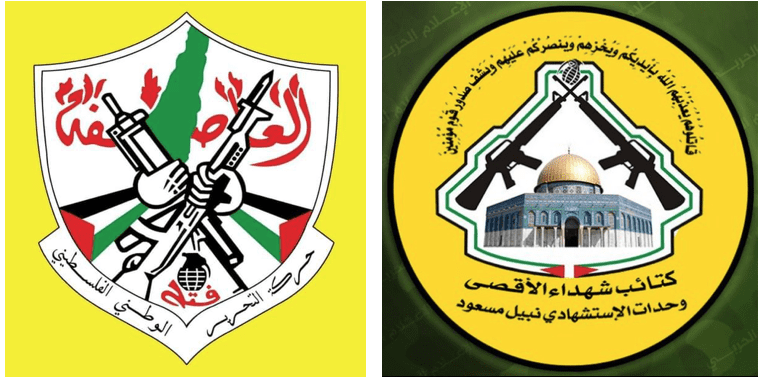
RAMI RAYAN, ONE OF 16 AL-AQSA MARTYRS’ BRIGADES TERROR OPERATIVES ON THE ORIGINAL HUMANIZE PALESTINE WEBSITE
The original Humanize Palestine websites were created as a memorial for martyred Palestinian terror operatives.
To view photographs of the 16 members of Fatah’s military wing, the al-Aqsa Martyrs’ Brigades found on the Humanize Palestine websites’ photo gallery, click HERE .
لمشاهدة صور 16 من حركة فتح، عناصر كتائب شهداء الأقصى الإرهابية التي عُثر عليها في معرض الصور الفوتوغرافية لمواقع الإنترنت لـ “أنسانة فلسطين”، انقر هنا
*************************
THE ORIGINAL HUMANIZE PALESTINE NARRATIVE:
Memorializing Palestinian Terrorists
IN MEMORY: RAMI RAYAN
Click HERE to view original Humanize Palestine Website (Use Back Arrow to Return)
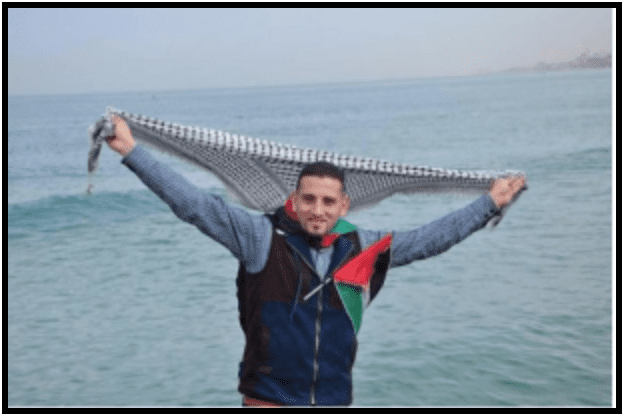
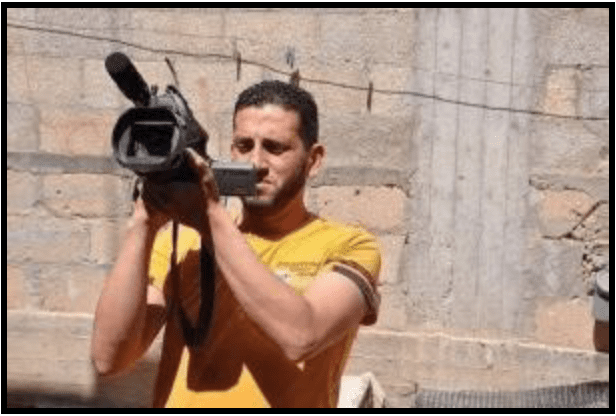
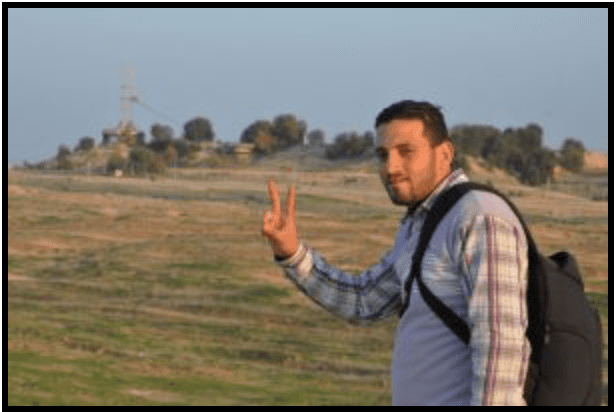
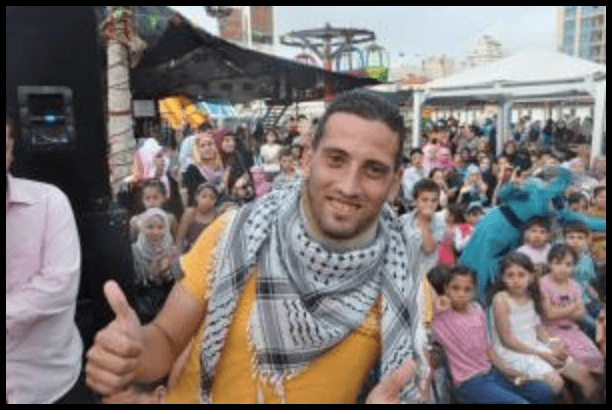



Rami Rayan, 22 years old, was a Palestinian photojournalist killed on July 30, 2014 in an Israeli airstrike on a busy market in Shujaiyya. He was at the market to cover Palestinian citizens shopping for basic necessities during a four-hour truce called by the Israeli military. He was a photographer for the Palestine Network for Press & Media and was wearing a helmet and a vest marked “PRESS” vest when he was found among the dead. At least 16 other people were killed, and over 150 wounded, in the attack.
His weapon? His camera.
Journalist Sameh al-Aryan was killed in the same attack.
Some of Rami’s photographs:
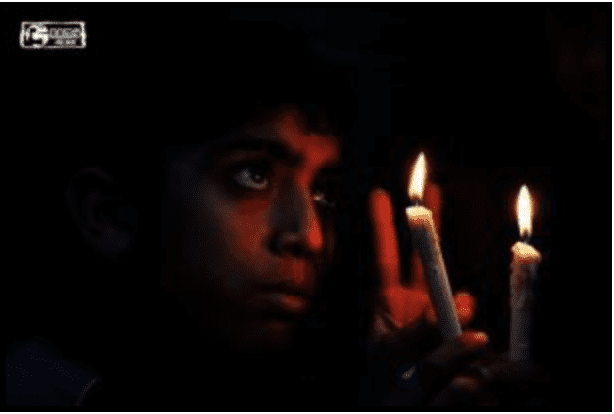

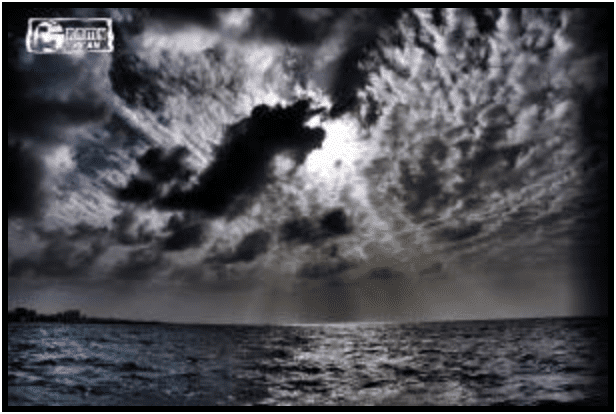
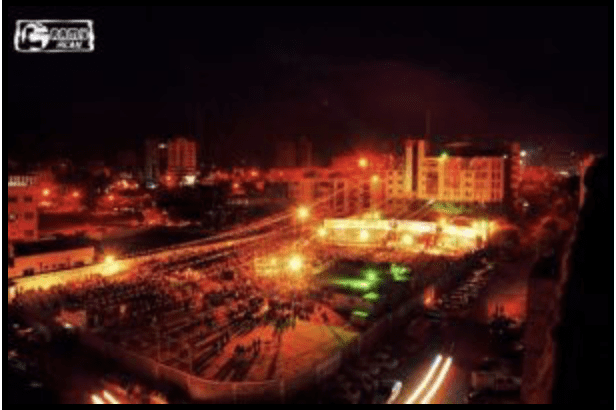

You may view more of Rami’s photos here.
Sources: Huffington Post, Committee to Protect Journalists, Rami’s personal Facebook
THE MEMORIALIZATION OF A PALESTINIAN TERRORIST
(By the original Humanize Palestine Website)
5 THOUGHTS ON “IN MEMORY: RAMI RAYAN”
- JANE ROSSITER-SMITH July 31, 2014 at 12:10 am REPLYRami, your death has left us all bereft. You brought the truth to us in all corners of the world. In your memory we will never let the message die….
Sincere condolences to your family and friends all over the world.
JaneLike - MILAZAIDE11 July 31, 2014 at 1:28 am REPLYRami. My heart goes to your family, you are a hero Grande, god bless you wherever you are, sorry you paid the price of this coward attack against Palestine, God will overcome. thanks for your amazing fearless dedication to your people. Long Live PalestineLike
- SKYWALKERSTORYTELLER July 31, 2014 at 8:14 am REPLYMay he rest in peace. Om mani padme humLike
- Pingback: Journalist Rami Rayan Killed In Gaza Attack: Huffington Post, Utube, Humanize Palestine | whatsgoingoninpalestine
- Pingback: In Memory: Sameh al-Aryan | Humanize Palestine
*************************
THE FACTUALLY CORRECT NARRATIVE:
Identifying Palestinian Terrorists
AL-AQSA MARTYRS’ BRIGADES* OPERATIVE: RAMI RAYAN
*The al-Aqsa Martyrs’ Brigades is a U.S. Dept. of State designated Foreign Terrorist Organization, the military wing of Fatah
THE INCIDENT
COMMITTEE TO PROTECT JOURNALISTS
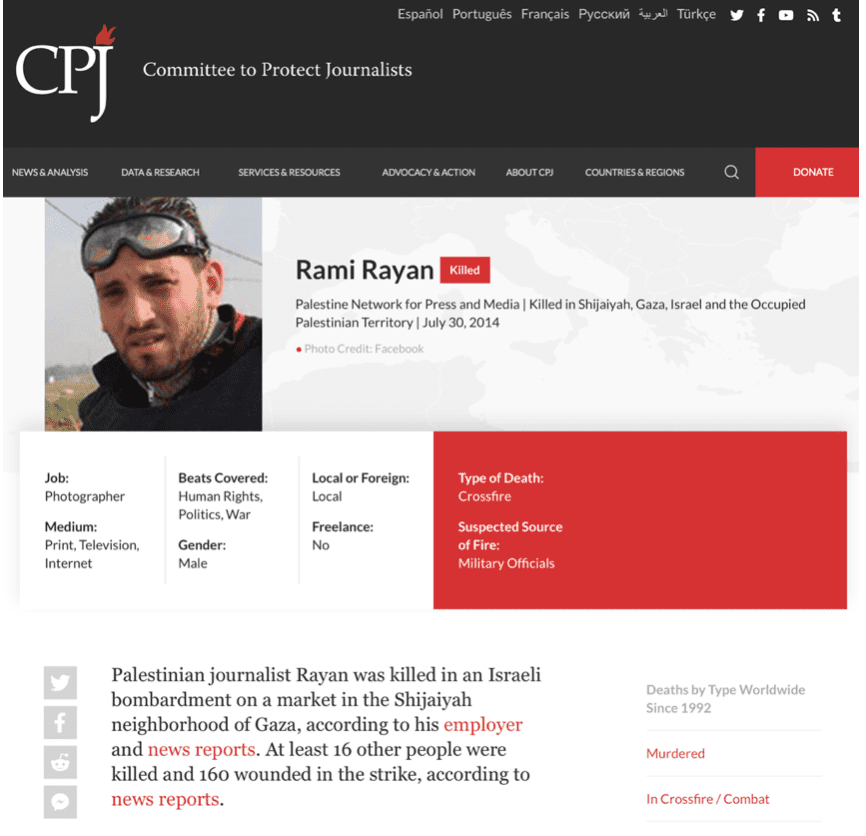
Click HERE to view website
Palestinian journalist Rayan was killed in an Israeli bombardment on a market in the Shijaiyah neighborhood of Gaza, according to his employer and news reports. At least 16 other people were killed and 160 wounded in the strike, according to news reports.
Rayan, a photographer for the local news agency the Palestine Network for Press and Media, was at the market to cover Palestinian citizens shopping for basic necessities during a four-hour truce called by the Israeli military, Nasr Abu Foul, the network’s manager, told CPJ.
Mohammed Nour al-Din al-Deiri, a Palestinian media worker for the Palestine Network for Press and Media, was killed in the attack that day, according to reports and his father, who spoke to CPJ. Sameh al-Aryan, a cameraman for the Hamas-run Al-Aqsa TV channel, was also killed in the attack, Samir Abu Mohsen, the station’s programs director, told CPJ. At least two other journalists were injured in the strikes. Abu Foul told CPJ that the network’s editor, Mahmoud al-Qasas, had been badly injured in the strike and was hospitalized with head injuries. The local Al-Manara media agency said its cameraman, Hamid al-Shobaky, was also injured and hospitalized.
A graphic video posted by Al-Manara on its Facebook page shows repeated explosions rocking Shijaiyah, as the injured cry out for help amid ringing sirens. At the beginning of the video, Rayan is seen filming as ambulances arrive. By the end, he lies dead on the street among other victims. According to CNN, the video came from al-Shobaky’s camera. After he was injured, his assistant picked up the camera and continued to film.
Graphic pictures on the network’s Facebook page show Rayan in the hospital wearing a press helmet. Another photo by AFP/Getty Images shows him wearing a helmet and a vest marked “PRESS.”
An internal IDF committee led by investigators who had not been part of the chain of command during the incident found that the “tragic” civilian deaths on July 30 were the result of “a number of coincidences and series of events that a military commander should not be expected to predict,” according to a statement published in March 2015. The committee said that IDF forces fired mortar shells in response to enemy fire, not realizing that a previous round of IDF mortar fire had struck a civilian building and led to civilians, including journalists, to gather in the area despite previous orders to evacuate. The committee said that aerial surveillance was unavailable at the time but previous surveillance had not spotted civilians and that mortar shells were chosen in lieu of more powerful artillery shells to minimize collateral damage. The committee also said it could not rule out the possibility that some of the casualties that day resulted from Palestinian fire.
The final report of the U.N. Independent Commission of Inquiry on the 2014 Gaza Conflict, published in June 2015, cast doubt on whether the IDF took full precautions in minimizing civilian casualties in this instance, specifically questioning why the IDF did not have real-time aerial surveillance and did not use weapons more precise than mortar rounds. It concluded that the incident may have violated the prohibition against indiscriminate attacks.
IDF MILITARY ADVOCATE GENERAL
The Military Advocate General (MAG Corps’) (Hebrew: הפרקליטות הצבאית, HaParklitut HaTzva’it) is responsible for implementing the rule of law within the Israel Defense Forces. The unit’s objectives include integrating the rule of law amongst IDF commanders and soldiers;⁸ providing commanders with the tools for the effective performance of their missions in accordance with the law; and working with the IDF achieve its goals on all legal fronts. The MAG Corps’, most noteworthly, has the ability to provide legal advice in emergencies and during warfare.[1]
For more about the MAG Corps, click HERE (Use Back Arrow to Return)
FFA MECHANISM
A General Staff Mechanism for Fact-Finding Assessments (the ‘FFA Mechanism’) examines Exceptional Incidents that occurred during Operation ‘Protective Edge’. The FFA Mechanism, headed by a Major General, was activated soon after the commencement of Operation ‘Protective Edge’, in the midst of the ongoing hostilities.
To read more about the FFA Mechanism, click HERE (Use Back Arrow to Return)
ALLEGATION CONCERNING THE DEATHS OF 31 INDIVIDUALS AS A RESULT OF STRIKES ON THE HOUSE OF THE AL-SALAK [SILK] FAMILY AND ITS SURROUNDINGS IN SHUJA’IYYA (30 JULY 2014)
In reports published in various media sources, it was alleged that on 30 July 2014, IDF forces fired upon the marketplace in Shuja’iyya, at a time when a ceasefire was in place, and as a result of these strikes, between 15 to 17 people were killed, including children, emergency services personnel, and reporters. Subsequently, and in accordance with the MAG’s investigation policy, the incident was referred to the FFA Mechanism for examination.
After the incident was referred to the FFA Mechanism for examination, the MAG Corps received an additional complaint from an NGO, in which a different account of the event was provided. According to the account provided in the complaint, the incident described above actually took place in an area that was at a distance of around 150 meters from the market in Shuja’iyya, and not within the market itself. According to the allegations, the event commenced with a strike by a shell on a number of individuals from the Al-Salak family, who were up on the roof of their house, a fact which resulted in the death of seven members of the family. After the strike, a large number of people started to gather in the open area next to the family’s house, including medical personnel, reporters, and others. While people were gathered there, another two shells struck the area, resulting in the deaths of 21 of those present. Additionally, it was alleged that as a result of additional shell strikes, an individual in an adjacent building was killed, along with two individuals part of Hamas’ Civil Defence. All total, according to this account, 31 people were killed in the course of this incident. It was further alleged, that over the course of the incident, a total of 16 shells were fired at the area.
According to the factual findings collated by the FFA Mechanism and presented to the MAG, the events associated with the incident started at approximately 16:10, when an anti-tank (AT) missile was fired at IDF forces operating in an open area on the outskirts of the Shuja’iyya neighborhood. Immediately after the anti-tank missile was fired, there commenced an intense and ongoing burst of mortar fire, emanating from a built-up area in the neighborhood, targeting the forces. As a result of this fire an IDF soldier was injured and the rest of the soldiers at the scene were placed in real danger. Further, in light of this use of fire, and the situation in which the forces found themselves (including a tank that could not move due to malfunction), the conclusion drawn by the commanders in the field was that this fire could provide cover for an attempt to abduct a soldier. During this episode of mortar fire, five sites in a built-up area were identified as points from which shells had been fired at IDF forces. Nevertheless, IDF forces did not return fire towards the sources of this fire, because of their proximity to “sensitive sites” (in the IDF, “sensitive sites” are civilian sites that receive special protection from attack under the law of armed conflict (such as medical facilities), as well as other civilian sites that warrant special consideration for policy reasons, even when there is no legal obligation (such as schools); such sites are identified in advance by the IDF and integrated into IDF’s operational systems).
At approximately 16:40, when the mortar fire had not yet ceased, IDF forces fired a number of rounds of smoke-screening shells, in order to screen the troops, and frustrate the enemy fire. At approximately 17:00, as the mortar fire upon the troops from the built-up area continued, and in light of the ongoing threat to the lives of the troops, the forces were able to identify two additional sources of fire, from which most of the fire towards them was originating at that time. After it was concluded that one of these points was sufficiently distant from sensitive sites, it was decided to return a limited amount of fire, of five mortar shells, with the aim of suppressing the fire targeted at IDF forces. The IDF fire was carried out using mortars, since there was no available alternative for carrying out the strike, including aerial alternatives, which would allow the necessary operational effect to be achieved. In this context, the possibility of using 155 mm high- explosive artillery shells was also considered, in order to address the danger faced by the forces. This possibility was dismissed for the reason that the collateral damage expected from mortar shells was more limited.
Approximately 18 minutes after the initial mortar fire was carried out by the forces, towards the source of the fire, and after the fire emanating from that site had not ceased, it was decided to fire an additional ten mortars towards it. After this round of fire, the mortar fire on IDF forces ceased. Only around 40 minutes after the execution of the above-mentioned fire were reports received by the IDF regarding the hit on civilians in this area.
The FFA Mechanism’s findings further revealed that at the time of the incident, the forces had believed that the likelihood of civilians being harmed as a result of the fire was low. Before the start of the ground incursion in Shuja’iyya, a widespread warning to evacuate had been provided, which, according to the information in the force’s possession, had resulted in the evacuation of the vast majority of the civilian population in the neighborhood. An additional warning to evacuate was made two days prior to the incident, on 28 July, in order to keep the civilian population at a distance from the area of hostilities. Moreover, during the ongoing aerial surveillance carried out in the area in the period leading up to the incident, no civilian presence was identified on the roads and in the open areas of the neighborhood – which are the areas in which the danger posed by mortar shells is generally greater than the danger to those inside a building. In real time, no aerial surveillance capabilities were available to the forces. Thus, even if the possibility of civilian presence in the area had not been entirely ruled out, in consideration of the assessment that most of the population had evacuated and that no civilian presence was identified in the area prior to the incident, the understanding was that the risk of harm as a result of the limited fire was low.
After the event, by comparing the actions taken by IDF forces with the allegations contained in the complaint received by the MAG Corps, it can be concluded that one of the shells from the first round of fire carried out by IDF forces apparently struck the roof of the Al-Salak family, at a time when the family was on the roof, and killed seven family members; and that two shells from the second round of fire carried out by IDF forces apparently struck the crowd which had gathered next to the Al-Salak house in the wake of the first strike. At the same time, the possibility that the harm to civilians during this incident resulted from a misfire by a Palestinian terror organization has not been ruled out, in light of the extensive enemy mortar fire emanating from the area at the time.
In addition to the above, intelligence information indicated that six of the deceased in this incident appear to have been militants, and thus the total civilian fatalities is lower than that alleged in the complaint.
The FFA Mechanism’s findings further concluded, that the incident in question did not take place during a ceasefire in Shuja’iyya. The IDF announced a unilateral humanitarian ceasefire between the hours of 15:00 and 19:00 on that day, but clarified that this would not apply in a number of specific areas in which IDF forces were operating at that time, including Shuja’iyya (along with a number of other areas). This was transmitted in the media and in messages that were passed to the Palestinian side.
After reviewing the factual findings and the material collated by the FFA Mechanism, the MAG found that the fire was carried out in a manner that accorded with Israeli domestic law and international law requirements. The fire was aimed towards mortars and their operators, with the aim of neutralizing their capacity to continue carrying out ongoing and intensive fire on IDF forces, who found themselves in a situation of clear and present mortal danger. Prior to the execution of the fire, and during it, IDF forces acted in a restrained and calculated manner, and undertook a number of precautions which were intended to avoid, and in any event to minimize, harm to civilians. Initially the forces refrained entirely from returning fire, and thereafter they attempted to frustrate and cause the cessation of this fire by creating a smoke screen. After the fire did not cease, a number of alternatives were considered for returning fire to the sources of the fire, and out of the available and effective alternatives, they chose the means that was expected to result in the least collateral damage. Even then, the return fire was carried out in a measured and limited fashion.
As regards the strike’s compliance with the principle of proportionality, the MAG considered the reasonableness of the commander’s decision, taking into account the information that he had at his disposal at that time, both as regards the imperative military necessity of stopping the fire and neutralizing the danger posed to the forces, as well as in regard to the harm expected to result to civilians as a result of the strike. The MAG found, that in the incident in question, there occurred a number of coincidences and series of events that a military commander should not be expected to predict – the shell that resulted in the first instance of extensive harm to civilians (members of the Al-Salak family) landed on a roof, at a time where there was a group of people on the roof (while the chance that the shell would penetrate the building and cause similar harm to persons inside, was lower); and the second instance of extensive harm was caused to a group who had gathered outside the house of the Al-Salak family, in the wake of the previous strike. At the time when the decision was made to carry out the second round of fire, IDF forces were not aware of the hit on the Al-Salak house as a result of the first round of fire, nor of the crowd which had gathered outside the Al-Salak house. In light of the above, the MAG found that the commander’s assessment that the collateral damage expected from the strike would not be excessive in relation to the military advantage anticipated from it, was not unreasonable under the circumstances, in light of the information that was at his disposal at that time. As such the MAG found that there had been no misconduct on the part of IDF forces in regards to the incident in question, and that even though the ultimate outcome of the action was tragic, it does not affect the legality of the fire post facto.
In light of these findings, the MAG did not find that the actions of IDF forces raised grounds for a reasonable suspicion of criminal misconduct. As a result, the MAG ordered the case to be closed, without opening a criminal investigation or ordering further action against those involved in the incident.
INCIDENT SUMMARY
During the 2014 Gaza war, an anti-tank missile was fired at IDF forces operating in an area on the outskirts of the Shuja’iyya neighborhood. After this, an intense and ongoing burst of mortar fire was directed at IDF troops from the Shuja’iyya neighborhood.
Because the source of the mortar fire was coming from civilian sites, the IDF fired rounds of smoke-screening shells to protect their troops and frustrate the enemy. When the mortar fire continued, the IDF identified a source of fire that was sufficiently distant from civilian sites.
It was decided to target the site and suppress the fire targeting IDF forces by using mortars.
After the initial mortar fire was carried out by IDF forces towards the source of the fire, and after the fire emanating from that site had not ceased, it was decided to fire an additional ten mortar rounds towards it. After this round of fire, the mortar fire on IDF forces ceased. Forty minutes later reports were received by the IDF regarding the hit on civilians in the area.
It was concluded by the MAG Corps, that one mortar round from the first round of firing apparently hit the roof of the Al-Salak [Silk] family house when the family was on the roof.
After one of the mortar rounds hit the roof of the al-Salak [Silk] family house, a large number of people started to gather in the open area next to the family’s house, including medical personnel, reporters, and others. While people were gathered there, another two shells struck the area, resulting in the deaths of 21 of those present.
The incident described above actually took place in an area that was at a distance of around 150 meters from the market in Shuja’iyya, and not within the market itself.
In addition to the above, intelligence information indicated that six of the deceased in this incident appear to have been militants.
It should also be noted that the incident did not take place during a ceasefire in Shuja’iyya. The IDF announced a unilateral humanitarian ceasefire between the hours of 15:00 and 19:00 on that day, but clarified that this would not apply in a number of specific areas in which IDF forces were operating at that time, including Shuja’iyya. This was transmitted in the media and in messages that were passed to the Palestinian command.
The IDF mortar fire was aimed at enemy mortars and their operators with the goal of neutralizing their capacity to continue carrying out ongoing and intensive fire on IDF forces who found themselves in a situation of clear and present danger. The Palestinian mortar fire was neutralized, killing six terror combatants. Unfortunately, civilians were caught in the crossfire and were killed.
RAYAN’S AFFILIATION, THE AL-AQSA MARTYRS’ BRIGADES
AL-AQSA MARTYRS’ BRIGADES WEBSITE, NEDAL.NET
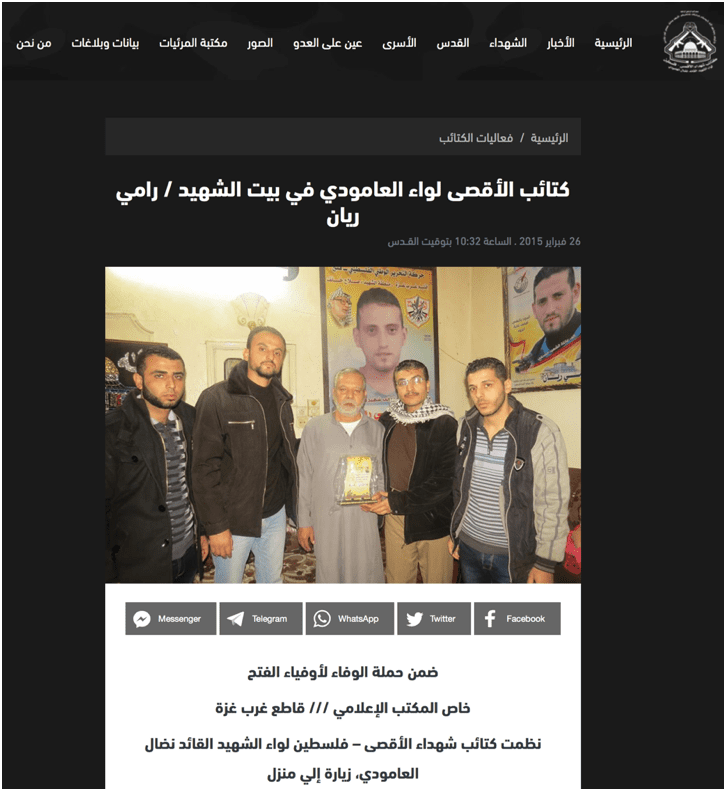
Click HERE to view website
كتائب الأقصى لواء العامودي في بيت الشهيد / رامي ريان
26 فبراير 2015 . الساعة 10:32 بتوقيت القــدس
ضمن حملة الوفاء لأوفياء الفتح
خاص المكتب الإعلامي /// قاطع غرب غزة
نظمت كتائب شهداء الأقصى – فلسطين لواء الشهيد القائد نضال
العامودي، زيارة إلي منزل
الشهيد البطل/ رامي ريان
والقي الأخ / أبو احمد كلمة طيبة باسم الكتائب
وانتهت الزيارة بتسليم عائلة الشهيد
درع إهداء من الكتائب تعبيرا عن وفاء الكتائب للمخلصين
من جانبها تقدمت عائلة الشهيد
بالتحية والشكر إلي الوفـد الزائر لمنزله علي هذه الزيارة الطيبة


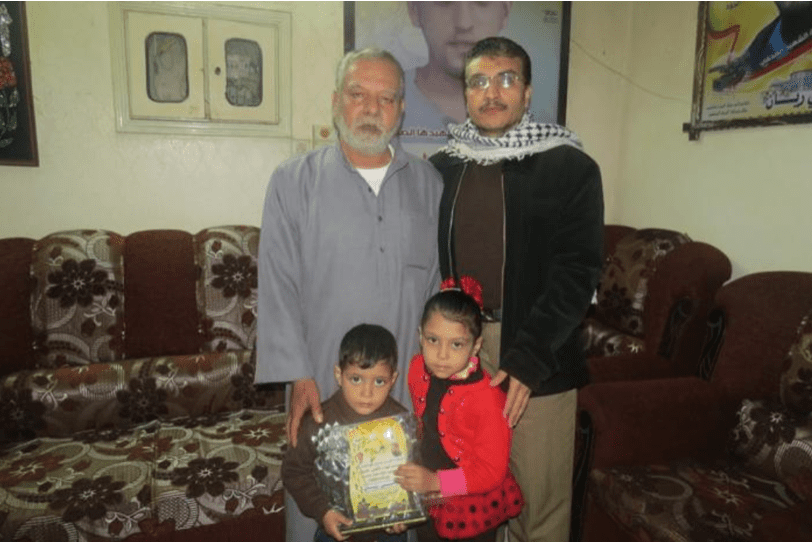
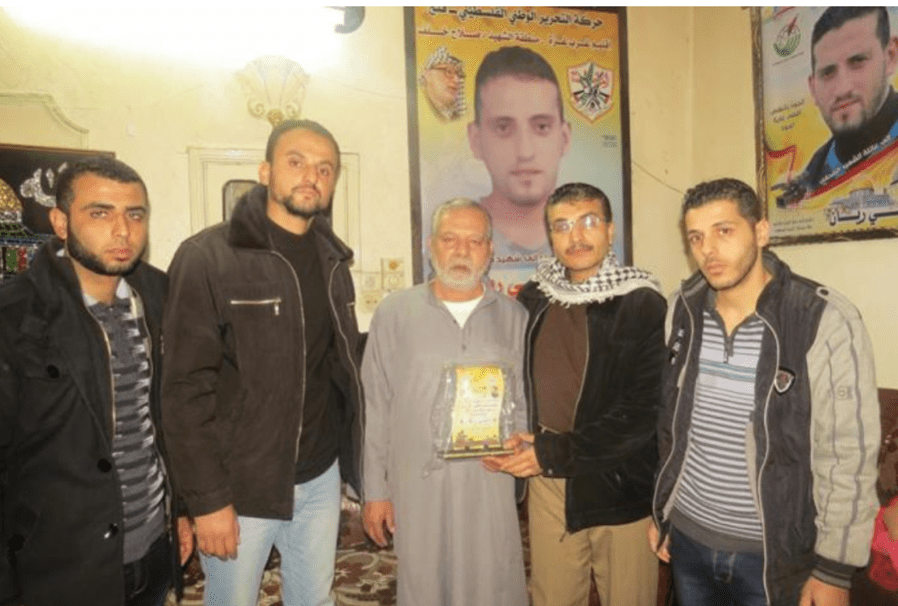
ENGLISH TRANSLATION
Within the campaign to fulfill loyalty to the conquest
Special information office /// Sector of West Gaza
Al-Aqsa Martyrs Brigades – Palestine organized the brigade of the martyr commander Nidal
Al-Amoudi, home visit
The martyr hero / Rami Rayan
Brother Abu Ahmed gave a good word on behalf of the Phalanges
The visit ended with the handover of the martyr’s family
Shield dedication from the brigades, an expression of loyalty to the loyalty of the brigades
For its part, the martyr’s family advanced
Greetings and thanks to the delegation visiting his home for this kind visit
DONATION SHIELD FROM THE BRIGADES AS AN EXPRESSION OF THE LOYALITY OF THE BRIGADES
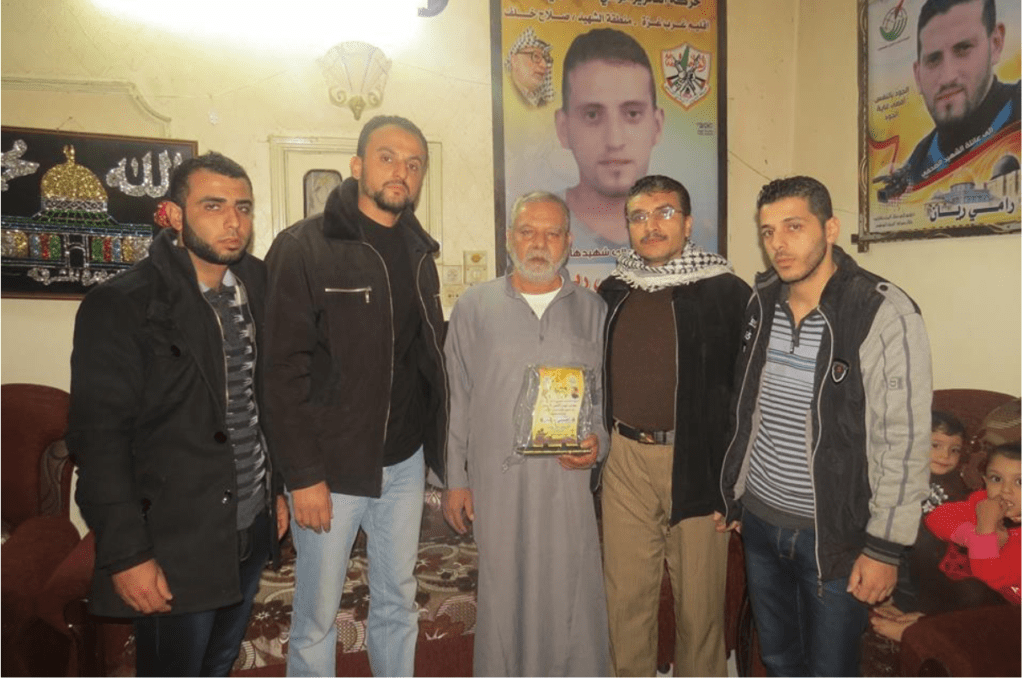
THE SHIELD FROM THE AL-AQSA MARTYRS’ BRIGADES
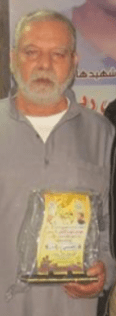
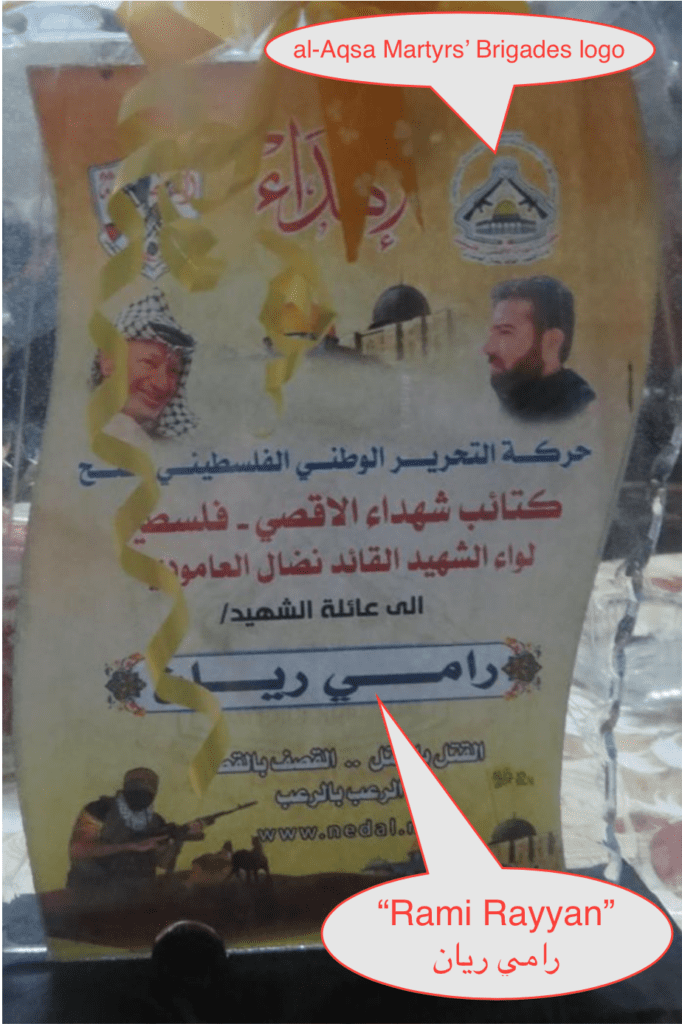
ARCHIVED AL-AQSA MARTYRS’ BRIGADES WEBSITE, NEDAL.NET
(No longer present online)
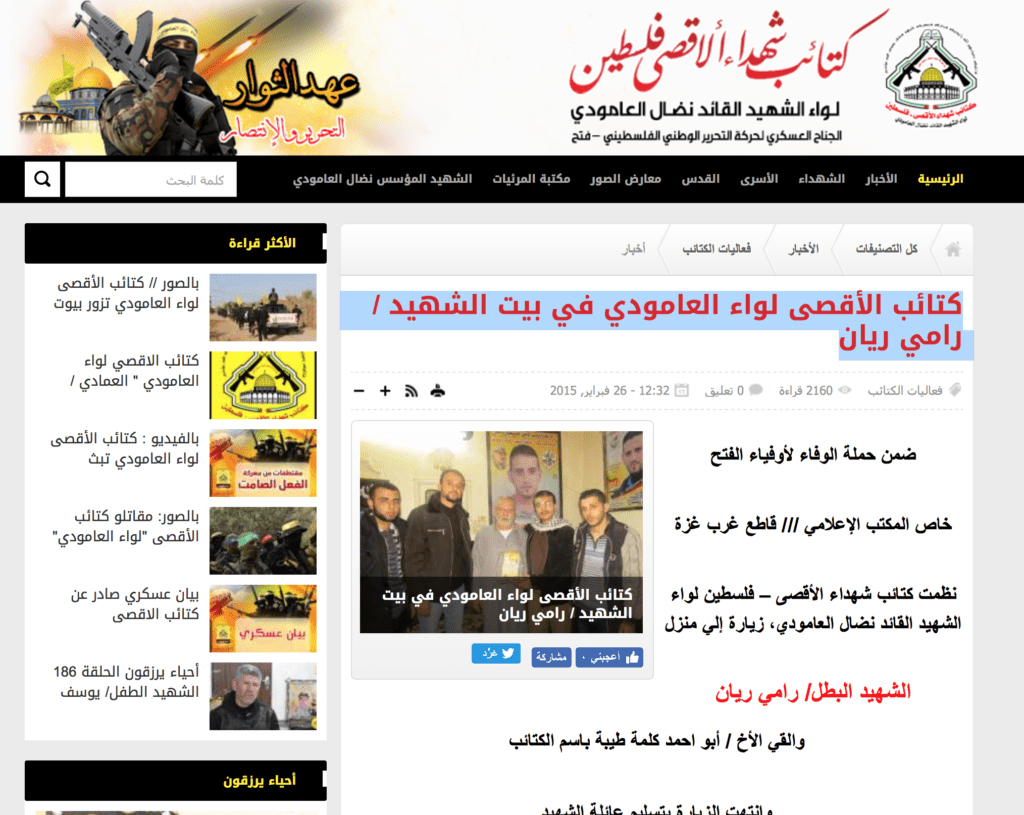
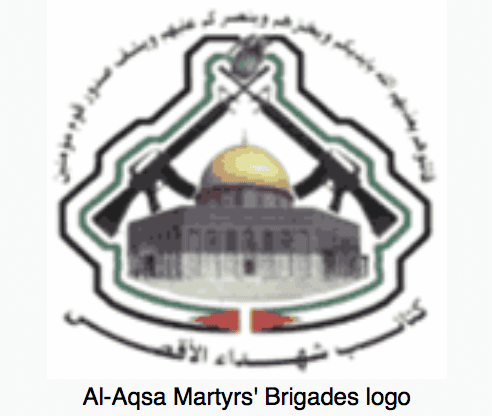
PATENTLY FALSE NARRATIVE, ORIGINAL HUMANIZE PALESTINE WEBSITE
ORIGINAL HUMANIZE PALESTINE WEBSITE
“Rami Rayan, 22 years old, was a Palestinian photojournalist killed on July 30, 2014 in an Israeli airstrike on a busy market in Shujaiyya. He was at the market to cover Palestinian citizens shopping for basic necessities during a four-hour truce called by the Israeli military. He was a photographer for the Palestine Network for Press & Media ….”
THE FACTS
FACT #1: Rami Rayan was not killed in an Israeli airstrike. He was killed by two of 10 mortar rounds, fired by the IDF to suppress Palestinian mortar fire directed at its troops.
FACT #2: Rami Rayan was not killed in a busy market in Shujaiyya. He was killed in an area that was at a distance of around 150 meters from the market in Shujaiyya and not within the market itself.
FACT #3: Rami Rayan was not covering Palestinian citizens shopping for basic necessities when killed by the two mortar rounds. Two rounds of mortar fire was directed at Palestinian forces who were firing at IDF troops. One mortar round from the first round of firing struck the roof of the al-Salak family home. And two mortar shells from the second round of firing carried out by by IDF forces struck the crowd which had gathered next to the al-Salak house in the wake of the first strike. Rami Rayan was killed when he was part of a group adjacent to the al-Salak house.
FACT #4: Rami Rayan was not killed during a four-hour truce called by the Israeli military. There was no ceasefire in place for the Shujaiyya neighborhood.
FACT #5: He may or may not have been a photographer working for the Palestine Network for Press & Media, when killed. But he was a terror operative of the al-Aqsa Martyrs’ Brigades, the military wing of Fatah and a U.S. designated Foreign Terrorist Organization.
Further evidence of Rami Rayan’s affiliation with the al-Aqsa Martyrs’ Brigades terror organization, follows – his children are receiving US dollars, goods and services from a Qatari charity that rewards families of martyred terror operatives:
QATARI COVERT FUNDING OF GAZA TERROR ORGANIZATIONS
THE HEARING AND SIGHT FOUNDATION FOR DEVELOPMENT AND COMMUNITY REHABILITATION

مؤسسة السمع والبصر للتنمية والتأهيل المجتمعي
The Hearing and Sight Foundation for Development and Community Rehabilitation is a Qatari NGO charity. It states that its charitable projects in Gaza support the needy, the poor, widows and orphans, especially the parents of cochlear-planted children, many of whom can not afford rehabilitation fees, transportation and other expenses. This is not completely true and misrepresents what the charity presently does in Gaza.
The charity covertly supports and rewards the families of martyred Palestinian terror operatives, affiliates and combatants such as Rami Rayan. By falsely claiming that the charity supports the needy, poor, widows and orphans, the parents of cochlear-planted children, they are concealing their true mission. Receiving aid is not dependent on any of the above. Being needy and poor is not a requirement. The predicate for receiving aid is the family’s affiliation with a Gaza terror organization. The charity supports and rewards the children, widows and orphans of dead Palestinian terror operatives.
Islamic law does not allow adoption, taking someone else’s child as your own. The closest thing to adoption that is is allowed is legal foster care known as “kafala” (كَفَالَة). Kafala is the Islamic legal institution analogous to guardianship and it is used instead of adoption. The Qatari charity is the legal guardian of the 239 children who appeared on their website’s kafala photo gallery, the sons and daughters of martyred Gaza terror operatives. The photo gallery consisted of twenty pages, twelve children per page, eleven on Page 20.
The charity’s website and kafala photo gallery were removed from the internet. Before this happened, most of the website and the twenty pages of photographs were archived. Below, a partial screen grab of one of the archived kafala pages:
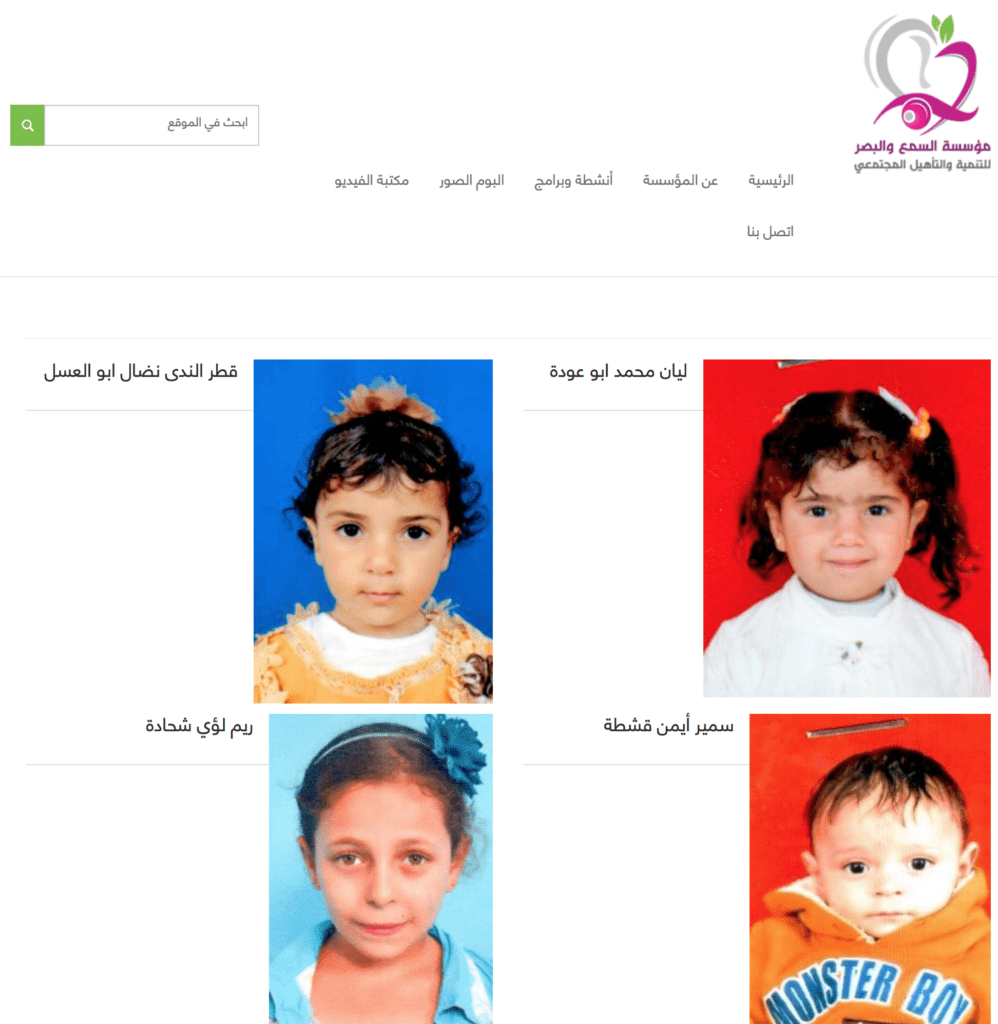
The photographs below, the two daughters and two sons of Rami Rayan, appeared on Page 13 of the charity’s kafala photo gallery, http://www.alsam3.net/kafala/page/13/:

ريماس رامي ريان
rimas rami rayan
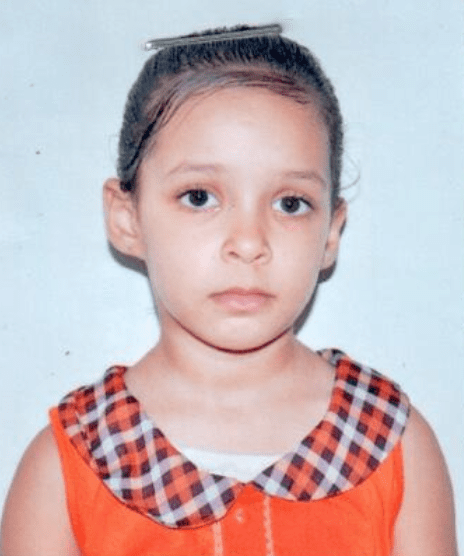
شهد رامي ريان
shahid rami rayan

فتحي رامي ريان
Fathi Rami Ryan
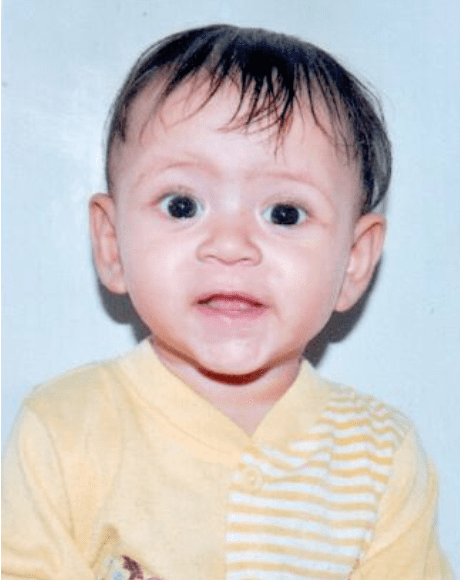
كرم رامي ريان
karam rami rayan
*************************
RAMI RAYAN IS ONE OF 18 MARTYRED TERROR OPERATIVES ON THIS WEBSITE WHOSE FAMILY MEMBERS ARE RECEIVING U.S. DOLLARS, GOODS AND SERVICES FROM THE QATARI CHARITY
To view a list of the 18 terror operatives and a link to their webpage, click HERE.
*************************